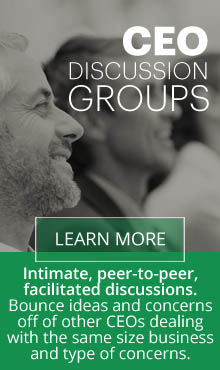 Neuroscience research is revealing the social nature of the high-performance workplace. This reference comes from an article by D. Rock entitled “Managing with the Brain in Mind.” So what does this have to do with Motivation? According to the researchers of this study and a number of other studies now emerging, one thing is clear: The human brain is a social organ. It’s physiological and neurological reactions are directly and profoundly shaped by social interaction. In other words, they found that “Most processes operating in the background when your brain is at rest are involved in thinking about other people and yourself.”
Neuroscience research is revealing the social nature of the high-performance workplace. This reference comes from an article by D. Rock entitled “Managing with the Brain in Mind.” So what does this have to do with Motivation? According to the researchers of this study and a number of other studies now emerging, one thing is clear: The human brain is a social organ. It’s physiological and neurological reactions are directly and profoundly shaped by social interaction. In other words, they found that “Most processes operating in the background when your brain is at rest are involved in thinking about other people and yourself.”
When you think of this in terms of the workplace, it presents enormous challenges to managers. Although a job is often regarded as a purely economic transaction, in which people exchange their labor for financial compensation, the brain experiences the workplace first as a social system. It’s not a stretch to relate to for anyone who has had their job eliminated and found themselves without the work relationships they once had. One manager explained to me just after going through such a process, that he felt like he had just gotten through tearing at the social fabric of the organization. The impact of this neural dynamic is a threat response that disorients people causing their brains to become less efficient. Based on my experience as a manager and a consultant, this accounts for a significant portion of lost productivity organizations experience following layoffs or unexplained terminations.
Researchers also found that when leaders make people feel good about themselves, clearly communicate their expectations, give employees latitude to make decisions, support people’s efforts to build good relationships, and treat the whole organization fairly, it prompts a reward response. In other words people within the organization become more effective, more open to ideas, and more creative. They notice the kind of information that passes them by when fear or resentment makes it difficult to focus their attention. They are less susceptible to burnout because they are able to manage their stress. They feel intrinsically rewarded and are more likely to feel motivated and engaged.
It reminds me of an exercise that I went through myself a number of years ago that I now ask some of my coaching clients to complete. Several of the questions in the exercise ask you to remember those experiences in your past when you were the most productive and motivated. It also asks you to note the characteristics of the person you worked for at the time and what you were able to accomplish. Rather than simply agreeing with what the researchers found and I believe to be true, I actually took the time to dig out my responses from a moldy smelling file in my basement. I recognize that this does not come anywhere close to passing as an official validation of the study, but I am convinced the leadership characteristics that resulted from their research that mentioned in the prior paragraph, is what’s necessary to motivate and engage today’s workforce.
I also believe that the reason that these are not the prevailing leadership characteristics we reward today, outside of the top performing companies, has to do with our reluctance to grasp the fact that the management practices left over from the Industrial Revolution are no longer up to the job.

 Jeri Quinn from Driving Improved Results is an executive coach, management consultant, speaker and author who focuses on communication in her work with executives and companies. She is the author of The Customer Loyalty Playbook, 12 Game Strategies to Drive Improved Results in Your Business. With more than 40 years as a serial entrepreneur.
Jeri Quinn from Driving Improved Results is an executive coach, management consultant, speaker and author who focuses on communication in her work with executives and companies. She is the author of The Customer Loyalty Playbook, 12 Game Strategies to Drive Improved Results in Your Business. With more than 40 years as a serial entrepreneur.

